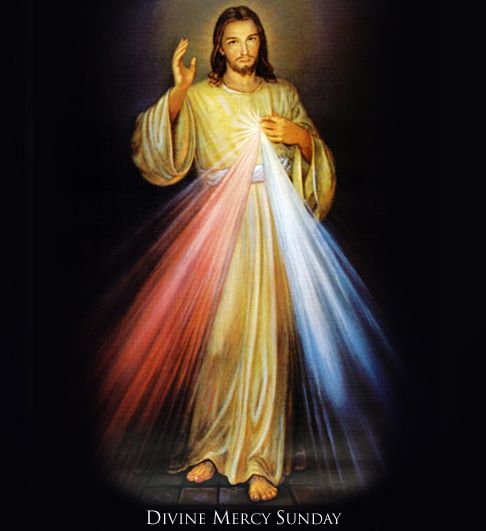 Hang on, because this is going to be a strange post. It's possible that this only makes sense to me, at the moment.
So here goes.
Hang on, because this is going to be a strange post. It's possible that this only makes sense to me, at the moment.
So here goes.
Let's jump back to that New York Times image of the late Pope John Paul II being the "John Wayne of the modern papacy, both tough and tender." I am still not sure what that means, other than that this was an image of the pope as a charismatic stage presence.
However, John Paul II was much more than that, according to both his many supporters and equally outspoken critics. In other words, this man's long papacy had content and this has something to do with why many are convinced that he is a heroic saint.
What kind of content? Damian Thompson of The Telegraph posted the following, which is commentary work that includes a strong dose of hard fact that was missing from the beatification rites. The headline?
Blessed John Paul II saved the Catholic Church from going the way of the Anglican Communion
Here is a large chunk of that:
The Catholic Church in the 1970s had something of the flavour of the Anglican Communion today. The question of women priests did not tip the Church into schism, but it was a distinct possibility. The Dutch Church had effectively declared UDI from the Vatican; beneath the near-impenetrable jargon of American and European theologians lay fundamental assaults on Catholic belief in the Real Presence, the sacramental priesthood and many other doctrines.
John Paul II used the power of the papal office to close down debates over these matters. Liberal Catholics may regard this as an assault on intellectual freedom, but from a sociological perspective what we were witnessing was the leader of a worldwide religion using his teaching authority to declare that his organisation believed X and not Y. No religion can survive without such boundaries, wherever they are drawn. ... There are other instances of boundary-drawing which kept in what other Catholics were trying to throw out, such as traditional devotion to the Virgin Mary, which was marginalised after the Second Vatican Council but, thanks to Mary’s devoted servant John Paul II, is now firmly back in the mainstream.
Karol Wojtyla was a man of formidable intellect: his encyclicals, and the Catechism he commissioned, sought to enrich rather than pare down the Magisterium. But it strikes me that his central achievement was to spell out what Catholics believe and what they do not, something that was by no means clear when he took office. Discuss.
So what we have here is a John Wayne with brainpower, one who mustered intellectual arguments to defend ancient traditions in a showdown with elements of modernity and post modernity -- doctrinal traditions and, to some degree, worship traditions. The latter half of that equation is, of course, linked to the Polish blood that ran in the veins of the man who millions now want hail as "the great."
Thus, I would argue that the beatification rites contained liturgical and doctrinal content. This was a John Wayne character whose heart was also open to mysticism and the devotions of the common people (in places like Poland). Many detested him for that. He was so, so Polish. Too Polish.
This brings us to my Scripps Howard column for this week, which is about the liturgically loaded timing for last weekend's rites. Please read it and offer your comment on the time line that serves as the heart of this essay:
Here's the top third of the piece:
To grasp the full symbolism of the Vatican rites in which 1 million or more Catholics celebrated the beatification of Pope John Paul II, it helps to understand the visions recorded decades earlier in the diary of Sister Mary Faustina Kowalksa.
Popes come and popes go. But the lives of this Polish nun and this Polish pope may be helping to reshape a crucial piece of the Catholic year -- the celebrations that follow Easter, the high point of the Christian year.
It was in 1937 that Kowalksa wrote: "As I was praying for Poland I heard the words: I bear a special love for Poland, and if she will be obedient to My will, I will exalt her in might and holiness. From her will come forth the spark that will prepare the world for My final coming."
After her earlier visions, which church leaders initially discounted, the young nun had written down a cycle of prayers appealing for God's forgiveness and mercy, a set of devotions that became known as the "Divine Mercy Chaplet." In the years after her death in 1938, a seminarian in nearby Krakow named Karol Wojtyla became devoted to these prayers and to the legacy of Kowalksa.
Wojtyla, of course, soon became a priest and a popular professor, before beginning his ascent as a bishop, archbishop and cardinal. Then, in 1978, he became Pope John Paul II.
No one was surprised when this loyal son of Poland beatified Kowalksa on April 18, 1993, and canonized her on April 30, 2000. "The message of Divine Mercy has always been near and dear to me," noted John Paul II during a 1997 pilgrimage to the nun's tomb. It could be said, he added, that her message "forms the image of this pontificate."
And when is Divine Mercy Sunday? The second Sunday of Easter.
When did John Paul II die? On the vigil of Divine Mercy Sunday.
When did Pope Benedict XVI declare him "blessed"? On Divine Mercy Sunday.
Might this have been a significant element of this news story? Is all of that mere symbolism or content of the life of John Paul II?
